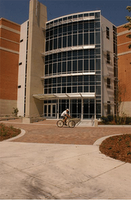Dupont's green ops, and the Greening of NYU
- One of the seemingly recurrent worries with big businesses switching from legacy, un-sustainable systems of production and industry is that of the cost/benefit ratio, the looming question "Is it really worth it to go green?"
Apparently, the DuPont corporation has answered with a solid "Yes" in their latest statement regarding their new commitment to global sustainability.
While the company plans to increase spending on environmentally smart products and technologies to $800 million, it believes the resulting estimated $2 billion will outweight this initial cost.
These technologies will aim to improve greenhouse gas emissions and overall energy efficiency. These benefits of energy conservation, water conservation (30% over the next 10 years), and other green technologies seem here to result not in wasted funds but in an overall positive ROI.
- In other news, NYU is working towards becoming more green. A new movement, called the "Greening of NYU". The goal of this committee will be to come up with solutions to achieve the university’s sustainability objectives, of which energy management, construction of the new co-generation plant project and documentation of building and engineering standards are a focus.
Some of the ideas already underway: decorative garden bed innovation: composting, controlled mineral runoff, drip irrigation to conserve water, and evaporative cooling.
Not every green project is easy to accomplish, however, and thus the ideas of "green roofs" takes some extra planning, since the existing roof structure must be able to support the normally-anticipated extra weight of the gardens in addition to regular circulation/cooling apparatus.
Other innovations proposed include smart energy-saving architecture including things such as double-paned windows and smart shades, conservation through recycling, and alternative energy sources such as solar, or even possibly wind power. Other changes are in place to help reduce energy consumption and apply for LEED certification as well.
Well, that's it for now. Check back tomorrow, where I hope to talk about some more simple household ways to conserve around the house.
Categories: Architecture, Big-Business, Energy




